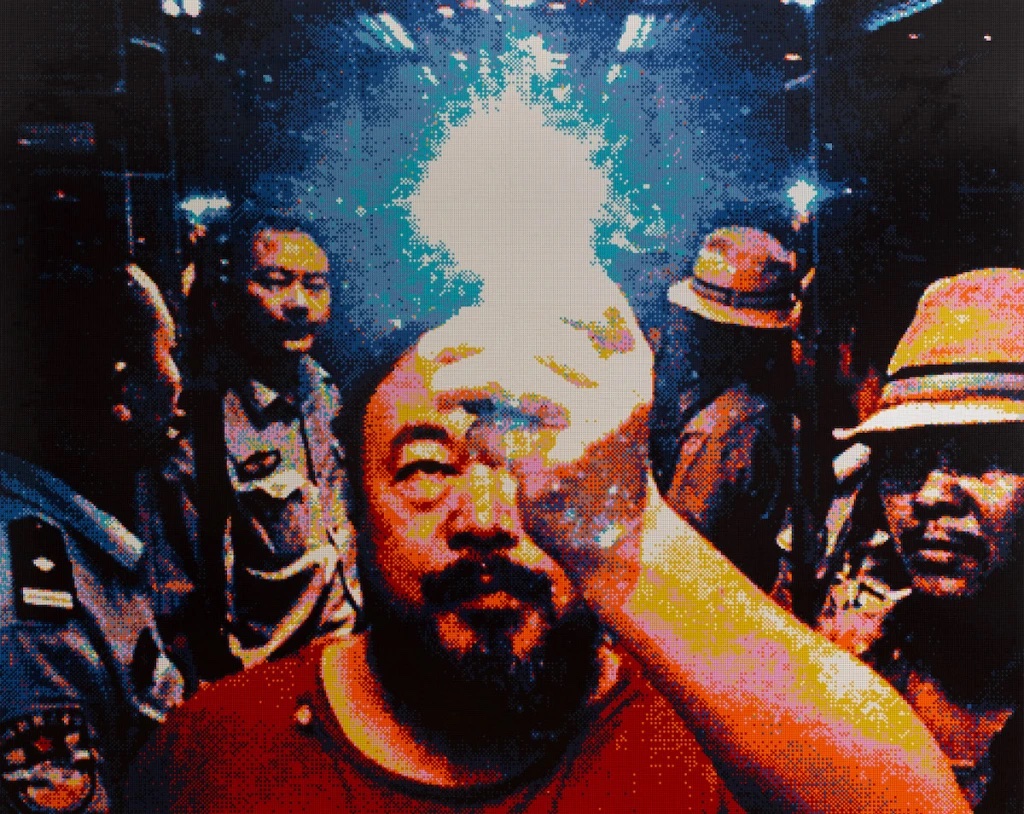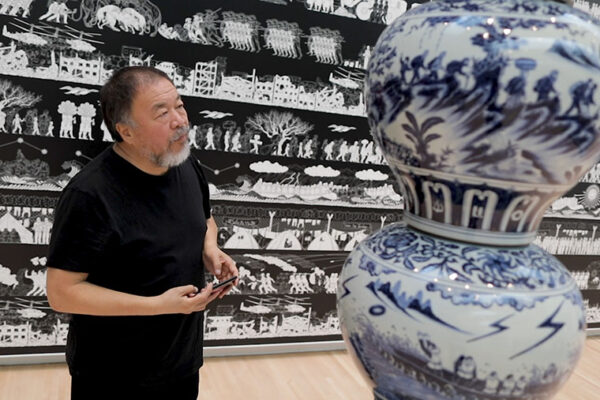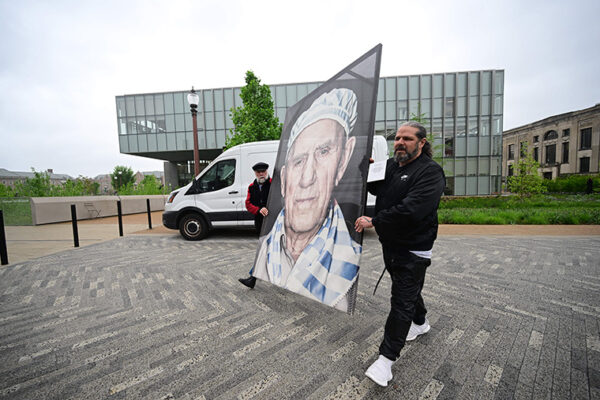
In August 2009, artist and activist Ai Weiwei was arrested in Chengdu, China. As police escorted him into a hotel elevator, Ai snapped a selfie. The image, later shared on social media, quickly became one of the most prominent examples of political resistance in 21st-century art.
Now, the Mildred Lane Kemper Art Museum at Washington University in St. Louis has acquired a monumental version of this iconic work. Titled “Illumination” (2019), the piece measures more than 12 feet wide by 10 feet tall and reproduces Ai’s selfie in colorful Lego bricks.
“Legos are a playful and broadly accessible commercial medium — and thus an effective tool for spotlighting political injustices,” said Sabine Eckmann, the William T. Kemper Director and chief curator at the Kemper Art Museum, who organized the museum’s 2019 exhibition “Ai Weiwei: Bare Life.”
“’Illumination’ also speaks to Ai’s sophisticated use of digital technology, social media and readymade materials,” Eckmann said. “We are thrilled to add this important work to the Kemper Art Museum’s permanent collection.”
About the artwork
At the time of his arrest, Ai was preparing to testify on behalf of Chinese writer and activist Tan Zuoren. Tan, like Ai, had been investigating human rights abuses relating to the 2008 Sichuan earthquake, which killed an estimated 90,000 people — work that led to Tan being charged with “subversion of state power.”
But Ai never made it to court. Instead, he and a group of volunteers, all staying at a Chengdu hotel, were awakened at 3 a.m., beaten by police and kept under watch for hours. Ai would later require surgery to drain blood from his brain.

Viewed from a distance, or in reproduction, Ai’s Lego “Illumination” can be difficult to distinguish from its original source. The image depicts the artist, flanked by two officers as well as a friend, musician Zuoxiao Zuzhou, standing in the hotel elevator. Ai’s shirt collar is torn, testimony to his beating, and he holds a cellphone aloft, its camera flashing brightly in the mirrored walls.
But as the viewer moves in closer, the artwork’s construction becomes more apparent. The contrasts grow sharper, the colors grow more saturated. The rows of Legos lend the image a gridded quality, at once suggesting the pixels of digital photography and the pointillism of post-Impressionist painting. Shadows along the artist’s cheek and forearm are rendered in bright, candy-like pinks, yellows and oranges.
Eckmann noted that the oval shape of the camera flash, which is centered directly above Ai’s head, suggests a halo or a mandorla, the almond-shaped radiance that appears in both Christian and Buddhist art. “The scene powerfully symbolizes Ai’s efforts to shed light on the Chinese government’s proceedings,” Eckmann explained. “This light can be seen as a manifestation of sacred, unprotected life in a state of legal exception.”
The acquisition of “Illumination” was made possible by a grant from the William T. Kemper Foundation. The artwork is currently on view in the Kemper Art Museum’s north lobby. For more information, visit kemperartmuseum.wustl.edu.


